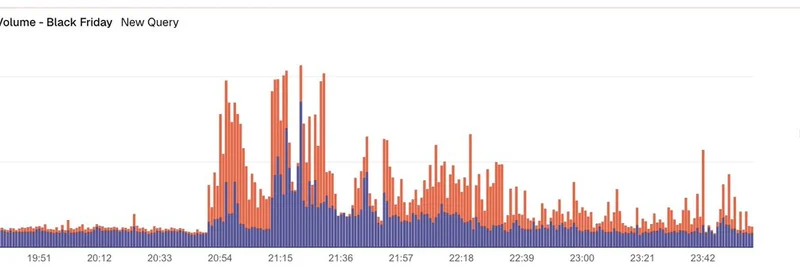If you've been following the crypto markets, you know Solana has had its share of wild rides. Recently, during what some are calling "Black Friday" for the blockchain—likely due to a sharp market downturn—we saw some intense action in SOL-USDC trades. Let's break down what happened, based on insights from data analyst Dan Smith (@smyyguy).
The Initial Volume Explosion
Around 20:50 UTC, as the market took its first big dip, trading volume for SOL-USDC pairs skyrocketed—jumping more than 10 times the normal per-minute levels. This kind of surge highlights how quickly things can heat up in decentralized finance (DeFi), where automated systems handle billions in trades without traditional intermediaries.
For context, SOL is Solana's native token, and USDC is a stablecoin pegged to the U.S. dollar. Trading pairs like this are crucial for liquidity on exchanges, allowing users to swap assets seamlessly.
Prop AMMs: Tight Spreads, But Risk-Averse in Volatility
Proprietary Automated Market Makers (Prop AMMs) are specialized liquidity providers that often offer better pricing—think tighter spreads (the difference between buy and sell prices)—under normal conditions. However, they prioritize risk management, which means they might withdraw liquidity when things get too unpredictable.
In this case, humidifi, one of the largest prop AMMs by volume, essentially paused operations for a 32-minute window from 21:16 to 21:48 UTC. During this time, they stopped providing quotes, leaving traders in a lurch right when volatility peaked. This period saw wild price swings across centralized exchanges (CEXs), with notable differences in SOL pricing between platforms.
Solfi's Resilience and Humidifi's Comeback
Not all prop AMMs bowed out. Solfi kept quoting through the chaos, handling the bulk of volume among its peers during that window. It's a testament to varying strategies among providers—some are built to weather storms better than others.
Once humidifi resumed, it quickly reclaimed its dominant position in trading volume. This back-and-forth shows how dynamic the liquidity landscape can be in real-time.
Traditional AMMs: The Always-On Heroes
On the flip side, traditional AMMs proved their reliability by offering "always-on" liquidity—no matter the market madness. These are the decentralized protocols where anyone can provide liquidity via pools, earning fees in return.
Orca, a popular Solana-based DEX (decentralized exchange), led the pack here, capturing 50-70% of the volume among traditional AMMs during the peak turmoil. This underscores a key strength: they're less likely to pull back because they're community-driven and algorithmically managed, not tied to a single entity's risk tolerance.
Key Takeaways for Meme Token Traders and DeFi Users
Events like this Black Friday dip remind us why understanding liquidity providers matters, especially in the meme token space where volatility is the norm. Prop AMMs can give you better deals day-to-day, but traditional ones like Orca ensure trades go through when it counts.
If you're building or trading on Solana, keep an eye on tools from Blockworks for data like this—it's gold for spotting patterns. Stay tuned to Meme Insider for more breakdowns on how these dynamics affect your favorite meme coins.
What do you think—does this make you lean more toward traditional AMMs for high-risk plays? Drop your thoughts in the comments!

